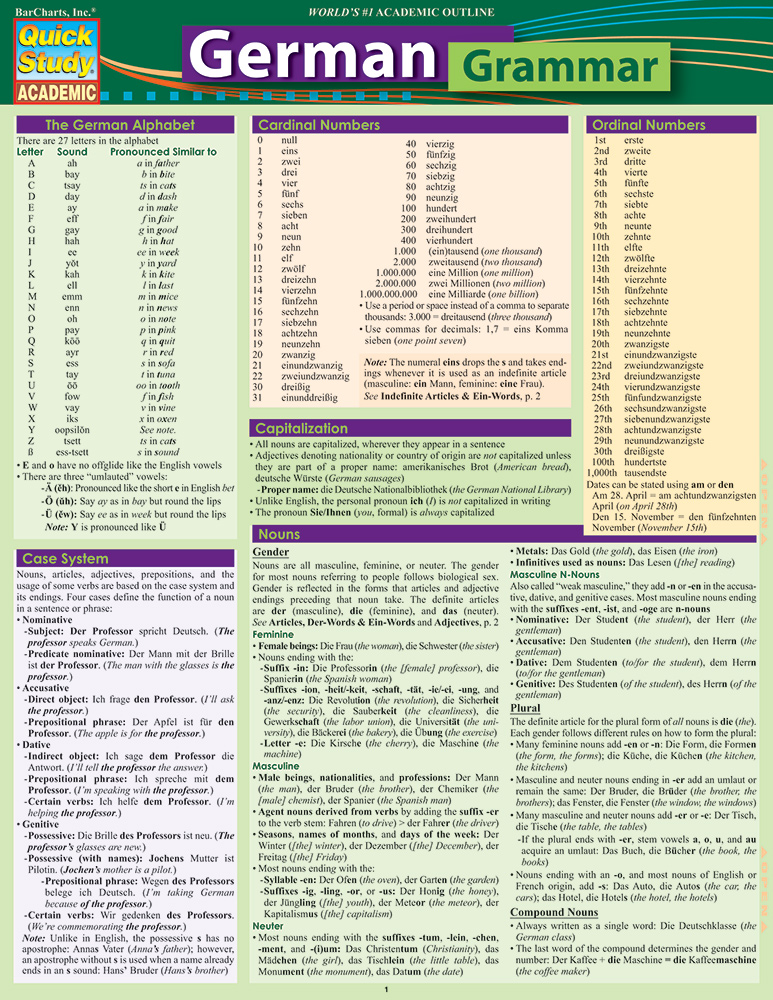
Audiovisual supplementĪ beautiful song to supplement this lesson is "Schaurig Traurig" (terrible sadness). Given that the declension is different depending on it being a determiner or not. We just have to pay attention to whether the determiner is: They have the same declension and if we want to be practical, we don’t need to worry about them. Indefinite determiners (kein, einige,…)įor practical purposes, often, when a pronoun acts like a normal pronoun or like a determiner, there is no difference.Demonstrative determiners (dieser, jener, derjenige, derselbe) or demonstrative articles.Determinersĭefinite articles, indefinite articles and pronouns with an attributive function are called determiners (Artikelwort). Pronouns that behave like articles are called attributive pronouns. Pronouns often accompany a noun (attributive function): More info at the apostrophe in German Pronouns that can function as articles Ich habe eine Wohnung I have an apartment

In an informal setting it is common to contract the indefinite article ein to ‘n: Contraction of the indefinite article in slang In German, "einige" (some) is sometimes used to refer to an indefinite number of objects (plural). This is the equivalent of the English article "a" or "an". The definite articles are contracted with prepositions in these cases:Īn + das = ans, an + dem = am, auf + das = aufs, bei + dem = beim, durch + das = durchs, für + das = fürs, in + das = ins, in + dem = im, um + das = ums, von + dem = vom, zu + der = zur, zu + dem = zum Declension of the indefinite article It is very important to learn this table.Ĭontractions: preposition + definite article We simply use "the" for any gender, case and number. The definite article (der, die, das,…) does not have an equivalent in English. In the second, the teacher is not known or irrelevant. In the first case, the teacher is known or relevant. The (female) teacher reads Die Lehrerin liestĪ (female) teacher reads Eine Lehrerin liest The definite article is used in German (just like in English) when we refer to a particular object. If you are finding it difficult to remember the four cases, do not get discouraged! These cases are often tricky for the English speaker, since in English, the use of the word, "the" as well as adjectives and pronouns do not decline in English.Differences between the definite and indefinite article The exercises below will help you practice and learn these different cases and how they are applied. For example, the word, " Hund" (dog) would be " der Hund" in the nominative (" Der Hund fängt den Ball."), " den Hund" in the accusative (" Der Mann sucht den Hund."), " dem Hund" in the dative (" Ich gebe dem Hund mein Brot.") and " des Hundes" (" Der Schwanz des Hundes ist braun.") in the genitive. You will find that in German, the endings for adjectives and nouns will change depending on how they are used in the sentence. (" I give the hat to the woman.") Finally, there is the genitive, which is the possessive case (" Die Bluse des Maedchens ist rot."). The dative is the indirect object, which is the receiver of the direct object. The accusative case is the direct object of it ( "I wear the hat.").

The nominative case is the subject of the sentence (" The cat is small."). These cases are the nominative, accusative, dative and genitive cases. In addition, German employs different cases to define and describe the noun, pronoun or adjective in the sentence.

You may have already learned that German defines the masculine (" der"), femine (" die"), neuter (" das") and plural (" die") forms of nouns and adjectives. German grammar exercises about cases and declension.


 0 kommentar(er)
0 kommentar(er)
